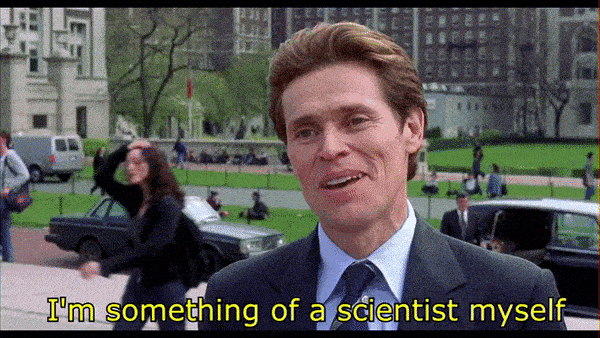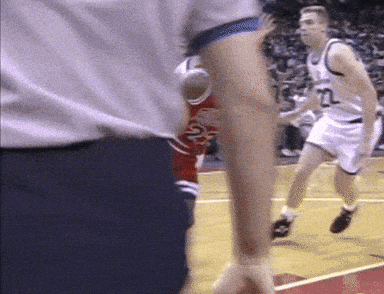- FCL Coaches Corner
- Posts
- Coaches Corner: Sunday 02/23/25
Coaches Corner: Sunday 02/23/25
Lombardi. Slappin' Glass. What is CLA? Zone Offense.

Welcome back to FCL’s Coaches Corner. As coaches ourselves, we are obsessed with learning and growing in our professions. Every other Sunday, we distill concepts and share the resources we find interesting. It is our goal to share nuggets and insights that we’ve been able to gather over the years from great coaches in all sports. At the end of the day, we all want to have the greatest positive impact possible on our athletes.
In case you missed last week’s email, check it out here.
If you were forwarded this email, you can get the free coaches newsletter here.
Matt Dunn & Deemer Class
Today’s Menu Includes:
Coach Spotlight: a quote from football legend Vince Lombardi.
Some Outside Inspiration: a podcast for basketball coaches 🏀.
A Trip to the Principles Office: a lesson on ecological dynamics and CLA.
A Webinar Freebie: A drill freebie from UVA women’s coach, Mike Lamonica.
FCL PODCAST & COACH COMMUNITY 🎙️ |
|---|
Want more coaching resources? Check out our free podcast on Spotify, YouTube and Apple podcast. … If you’re really ready to dive in, we highly recommend our men’s and women’s coaching communities. These include webinar guests from top college programs and other great coaches going deep into concepts and drills. |
Coach Spotlight: A Quote to Ponder 💭
"The challenge of every team is to build a feeling of oneness, of dependence on one another because the question is usually not how well each person performs, but how well they work together."

Vince Lombardi won 5 NFL Championships.
This quote, referenced in Legacy by James Kerr, speaks to a fundamental truth in coaching: talent alone doesn’t win—connection does. Kerr also shares a powerful insight from the All Blacks' performance consultant, Owen Eastwood:
“Leaders create the right environment for the right behaviors to occur. That’s their primary role.”
As coaches, we intuitively understand this, but how often do we intentionally create the conditions for this connection to take root?
I've always loved the word connected when thinking about teams. The more connected a group is, the better it performs. You see it in the way players communicate, trust, and anticipate each other’s movements. It’s why the best teams aren’t just skilled—they’re tight.
So, the real challenge is: How do we build that connection? Is it through shared adversity? Holding each other accountable? Vulnerability? Culture isn’t just something that happens—it’s something we cultivate.
How do you create this oneness within your teams?
Outside Inspiration: A Basketball Podcast 🏀
If you’re like us, you’re always looking to learn from other sports. That’s why we love the Slappin’ Glass podcast. These guys do an outstanding job interviewing coaches and breaking down the latest trends in basketball—many of which apply across sports. Most episodes are quick, insightful, and easy to listen to, making them a great resource for any coach. We’ve taken countless concepts from their discussions and found ways to apply them to lacrosse. Highly recommend giving it a listen! |
A Trip to the Principles Office 🤓
Welcome back to the Principles Office. Today’s lecture takes a different turn from prior weeks. Normally, we break down lacrosse-specific principles, but today, we’re stepping back to explore a broader coaching topic: the Constraints-Led Approach (CLA).
We started diving into this a few years back after reading Rob Gray’s book, How We Learn to Move (as Deemer mentioned last week). While these ideas have been around for decades, they’ve gained real traction in recent years as more coaches challenge traditional training methods.
It’s a fascinating topic, but also a challenging one. CLA pushes back against traditional coaching methodologies that are deeply ingrained in sports culture. Today, we’re going to break it down at a high level and share how we’ve been incorporating it into our coaching.
We don’t pretend to have all the answers, but we do challenge ourselves to keep an open mind and explore ways to improve. Let’s dive in…

The way you’re going to feel after this Principles Office 🧑🔬.
What is Ecological Dynamics and the Constraints Led Approach?
1️⃣ Ecological Dynamics
Ecological Dynamics explains how athletes develop skills by interacting with their environment, rather than simply memorizing and executing predetermined techniques.
Skill isn’t something hardwired into players through monotonous reps. Instead, players constantly adjust their movements based on what’s happening around them.
Did Michael Jordan drill this exact move thousands of times, or did he adapt based on what was in front of him?

Skill isn’t just about repetition - it’s about learning to read the game and adjust on the fly.
A key part of this is Perception-Action Coupling—the link between what a player sees and how they move.
A dodger reacts to a defender stepping up.
A shooter adjusts based on the goalie’s positioning.
A defender rotates based on an off-ball cut.
The game is constantly changing, so training needs to reinforce how players pick up cues and adjust their actions accordingly—not just how to perform a technique in isolation.
A big piece of this philosophy is that “on-air” reps—drills without other players to react to—are an ineffective means of developing skill. This challenges many traditional coaching models, which often rely on scripted movements that lack real decision-making.
2️⃣ The Constraints-Led Approach (CLA)
CLA is a coaching framework built on Ecological Dynamics. Instead of telling players exactly how to execute a skill, coaches manipulate constraints (task, environment, and individual) to guide learning and adaptability.
The table below highlights how CLA contrasts with the traditional coaching approach:
Traditional Approach | Constraints-Led Approach (CLA) |
|---|
Focuses on perfect technique ("This is exactly how you should dodge.") | Focuses on adaptability ("Here's a situation—find the best way to dodge.") |
Drills skills in isolation (scripted reps without pressure) | Puts skills in live, game-like settings (small-sided constraints) |
Coach provides all solutions | Player discovers solutions through guided challenges |
Repetitive, one-size-fits-all instruction | Customizes learning through environmental & task constraints |
This process is less about memorizing coaching instructions and more about developing the skills needed to solve real-game problems.
Coaches still need to coach and advise throughout this process, they just avoid prescribing exactly what to do.
At first, this approach can feel messy compared to the clean, structured nature of traditional drills. But research shows that it leads to better skill retention and transfer to real games.
Why Does This Work?
Without overcomplicating things, here’s a great example from Alex Sarama’s book Transforming Basketball that illustrates why this works:
“Early skill acquisition research demonstrated that low contextual interference led to better performance during practice, but it was the high contextual interference that led to better performance during retention and transfer tests (the game).”
What is Contextual Interference?
It’s the variation and unpredictability in practice conditions that challenges athletes to adapt, leading to better skill retention and transfer to games.
Essentially:
If practices are too structured and predictable, players might look great in drills but struggle in games.
If practices include more variability and decision-making, players struggle more in the moment—but their skills hold up under pressure.
A common pushback from coaches using traditional methods is that "it worked for them" growing up or throughout their career.
It’s not that these drills don’t work at all—it’s that they aren’t the most efficient way to develop skills that transfer to real-game environments, which is ultimately the goal. Haven’t we all coached a skill all week and saw it not transfer over to the game?
How This Applies to Lacrosse
This concept resonates with us deeply as both a players and as coaches.
Great athletes don’t just develop from structured reps—they explore, experiment, and adapt in unstructured environments.
I played sports every day in my neighborhood after school, and I firmly believe that’s where I developed the athletic capacity to compete at higher levels.
As coaches, our challenge is to create those same opportunities within practice.
👉 Make drills more game-like.
👉 Manipulate constraints to teach skills naturally.
👉 Let players solve problems instead of spoon-feeding answers.
Drills should be designed to encourage skill emergence, not just for the sake of repetition. Mess with constraints to help players adjust and find solutions.
An important caveat is that I do not believe this means we are entirely hands off as coaches. It’s rather we create environments that reinforce desired behaviors rather than just telling players to do things.
Examples of Constraints We Like In Drills
Shot Clock: count down a shot clock in reps of current drills to get players to play faster rather than always yelling to “play faster”.
Spacing: cone off certain areas players can or can’t go in drills. Mess around with these creatively to get desired behaviors.
Restrictions / Rules / Rewards: have to score stick to the middle, use off-hand, set a pick, get an extra rep if you execute, etc.
Communication: only certain players can or can’t speak.
This isn’t just about running small-sided drills. It’s about using constraints to intentionally shape the environment encouraging specific, desired behaviors to emerge.
Wrapping up, it’s important to note that we are still growing and exploring how to better utilize this style of coaching in an effective manner. We will share thoughts in here periodically as we break down other topics.
Thanks for taking a trip down the hallway. Stay tuned for more content all spring and email us at [email protected] with any questions.
🚨 Webinar Freebie 🚨
As many of you may be aware, we have a community for men’s and women’s coaches where we host regular webinars with coaches. As a perk of this newsletter, we give away one freebie. This week’s webinar clip is from Mike Lamonica, assistant Coach at Virginia. Mike was a ‘02 Maryland graduate and played in the MLL. He is in his 2nd year at Virginia, joining his wife and Head Coach, Sonia, after 13 years at Towson.
Mike’s Webinar covered Women’s Zone offense. His response to players to cueing players in a shooting slump, or missing/getting saved in the same spot repeatedly, was simple yet refreshing: “keep shooting”.
🚨Bonus 🚨
Check out Coach Dunn’s deep dive on Maryland’s defense versus Syracuse.



